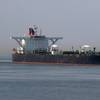CSA Challenges Legality of USCG, EPA BWT Regimes
Canadian Ship Owners Seek Fairness, Predictability and Harmonization of U.S. Ballast Water Discharges Regimes.
The Canadian Shipowners Association (CSA) has formally sought a legal review in the United States of the implementation dates found in the Environmental Protection Agency's (EPA) Vessel General Permit (VGP). The VGP imposes requirements that are currently impossible, making this review critical to ensuring fairness and predictability for CSA's members' operations in the U.S. waters of the Great Lakes; a vital link in the continental supply chain. Currently, there are two federal ballast water discharge regimes; one imposed by the EPA and another by the United States Coast Guard (USCG).
The USCG will eventually certify ballast water treatment systems for use in ships, but no systems have yet to qualify. Recognizing this compliance challenge, the USCG has begun to provide extensions to affected vessels. Unfortunately, the EPA has thus far declined to respond to industry's requests for parallel extensions, which has resulted in two different and conflicting federal regulatory regimes. This divergence in approach will adversely affect Canadian ship owners and their Canadian and American customers. "We would like to see the EPA harmonize with the approach of the USCG and facilitate continued operations," stated Robert Lewis-Manning, the President of the CSA.
Protection of the marine environment is paramount to the CSA's membership. The CSA membership operates Canadian-flagged and specially designed ships on Canadian coastal, Arctic and inland waters, with highly skilled Canadian crew that are part of a $35B Great Lakes - St. Lawrence Waterway marine transportation system. Recent investments of over $700 million in 14 new vessels, have positioned the industry for sustainment and a reduced environmental footprint. A report on the Environmental and Social Impacts of Marine Transportation (Research and Traffic Group, 2013) identified Marine transportation as the most sustainable form of transportation.
Traffic on the St. Lawrence Seaway inbound to the Great Lakes will pass in and out of U.S. and Canadian waters as many as 100 times on a single journey. The issue is truly an international issue in today's world of oceangoing commerce - especially for Canadian shipowners plying the Great Lakes / St. Lawrence Seaway corridor.












